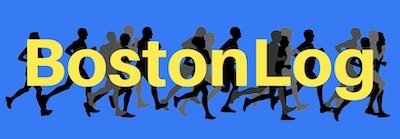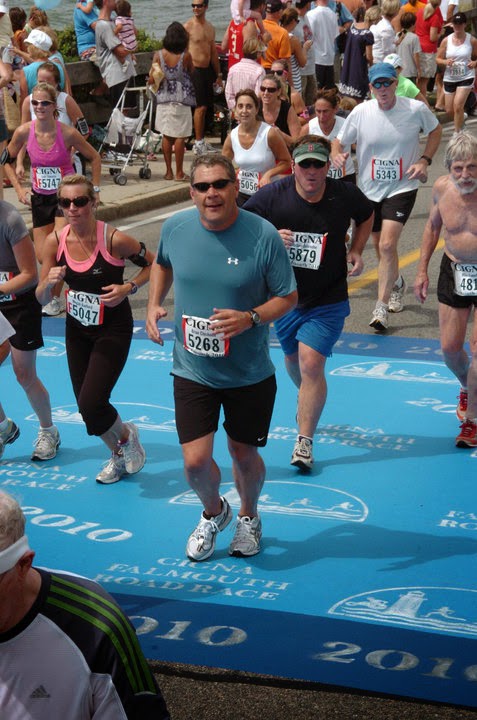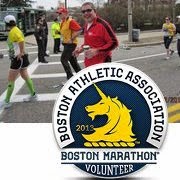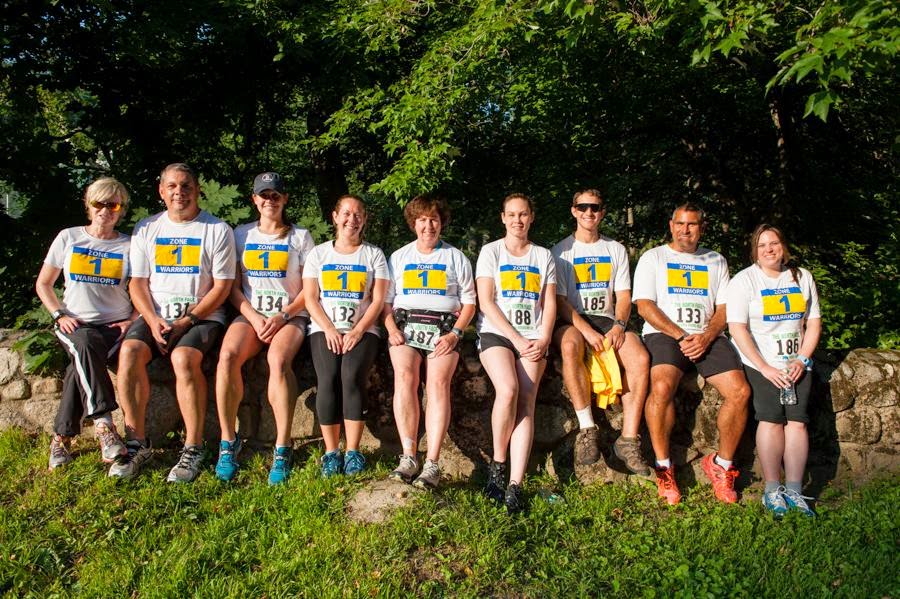I crossed the finish line at the Boston Marathon in 2013. It wasn’t the way I wanted to. I was wearing a white volunteer jacket with blue strips, pushing the yellow stretcher in the top right corner of the picture below, with three other volunteers. We were stopped briefly because the volunteer riding the rail thought he felt a pulse, but it was probably his own. That happens in situations like this where your own heart is pounding and you’re working to save someone’s life.
We continued our race across the finish line and into Medical Tent A where we were directed to “go all the way down.” I knew we were going past empty cots and that didn’t seem right. When we got all the way down and reached a second triage station on the right, the doctor said eight words, “hook up a monitor, set up a morgue.” Those words were devastating. We lost this race.
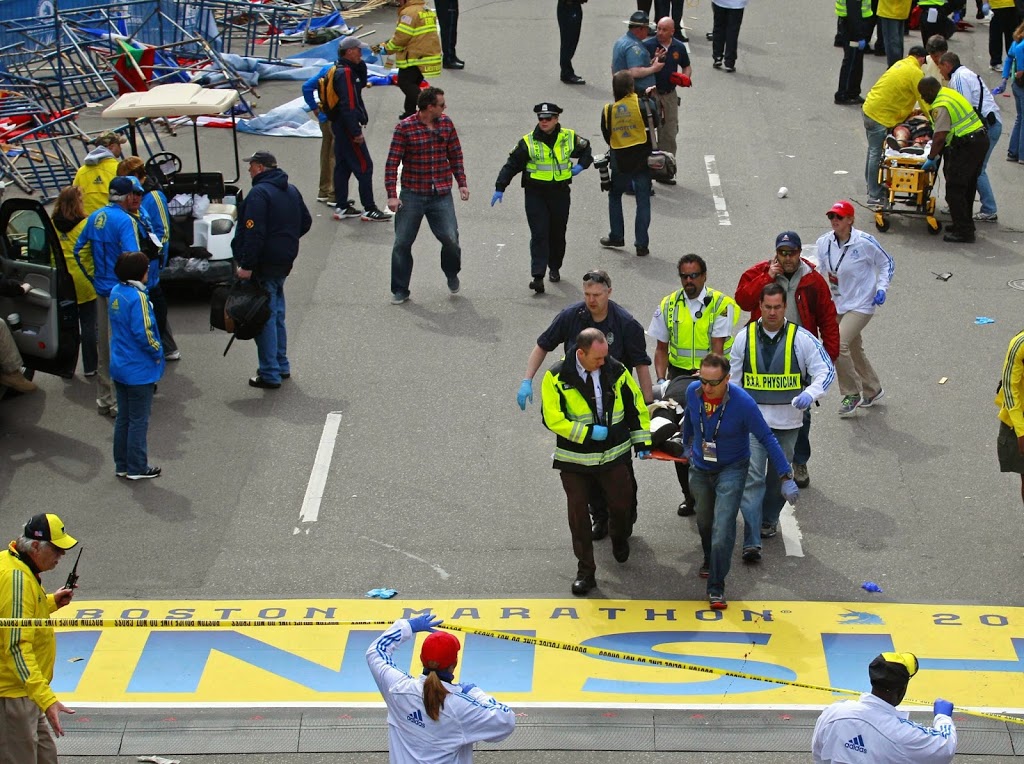 |
| Finish Line 2013 |
Our patient was treated gently and respectfully, as if she should feel no more pain. She had already suffered enough. Even though I only knew her for the last five minutes of her life, I feel like I had lost a family member. I think about her every day, and every night when I can’t sleep, which is often.
I’ve always wanted to run the Boston Marathon. After I graduated High School in 1973, I tried this new fitness fad called running. I lived near the beach and some days I just couldn’t wait to put my shoes on and head out to run along the water. I always watched the coverage of the marathon and always wanted to try it, but had never even run a short race. Then in 1988 I hurt my back and couldn’t run. I was in constant pain for several years.
In 2006, I was into my 50’s and had a teenage daughter. I wanted to get her more active and I found yet another fitness fad, boot camp workouts. Emily and I started workouts in the morning at Lynn Woods Boot camp. These workouts emphasized core strength exercises and team building exercises.
During one workout each week we would run in the woods on dirt roads and trails. It took about four weeks to run the first quarter mile, which is all uphill, without stopping. After the second month I found I could run a mile, then two miles and by the next summer I could run just over three miles and I felt pretty good doing it. In November of 2007, I ran my first road race, the Wild Turkey 5 Mile Run in Salem MA. A couple days before the race I drove the route to look for a place to park near the four mile mark. I thought if I couldn’t finish, I would take my bib number off and walk to my car and hopefully nobody would notice. But that wasn’t necessary, I finished the race and was thrilled.
So after an 18 year absence from doing something I loved, I returned to running. Things were easier in this century though. I met a lot of friends running, joined a couple of running clubs and even got a running coach. By 2011, I found myself at the starting line in Hopkinton, ready to run the Boston Marathon.
I had a good running summer in 2010. I trained for and ran 26.2 at Stonecat in Ipswich, a trail marathon. I made a lot of mistakes in that race, ones I wouldn’t make again. So after finishing Stonecat I set my sights on Boston. Luckily I had someone at work, Glenn Dunnigan, who wanted me to run it just as much as I did. Then in January of 2011, I got an email confirming my official charity entry.
My training season for 2011 did not go well. In January we had weekend blizzards four weeks in a row. The few runs I made outside that month could barely be called runs. The snowbanks were so huge I had to stop and turn sideways and lean up against parked cars so drivers could get past me. And then there was sickness. I got a cold in January. It went away but came back in February, then went away and came back as a sinus infection. I went on three different sets of antibiotics and had an allergic reaction to the third one. On March 28th 2011 I sat in my doctor’s office while she prescribed a two week course of prednisone. At this point, three weeks out from the race, I was almost in tears. I said to her, “I guess this pretty much takes me out of the race next month.” She said to me, “No, you should run, it’s good for the soul.” When I left that exam room, I was headed to the finish line.
Before April 18th 2011, I had only run a few sections of the course. I had never seen the course between Hopkinton and Newton lower falls. I was in corral 6 which I knew was the last corral. I remember looking up what I think was Grove Street and saw thousands of runners. I asked someone close by if there was a corral 7 and was told, no, they were the bandits. I didn’t mind that they were bandits but I didn’t want to get trampled by them. As we shuffled along Main Street, shoulder to shoulder I kept looking for the start line but didn’t see it. I thought I had passed it so I clicked my Garmin but it turned out I was still about 400 feet from the start; but it didn’t matter because I was at the start of a life-long dream, I was running Boston.
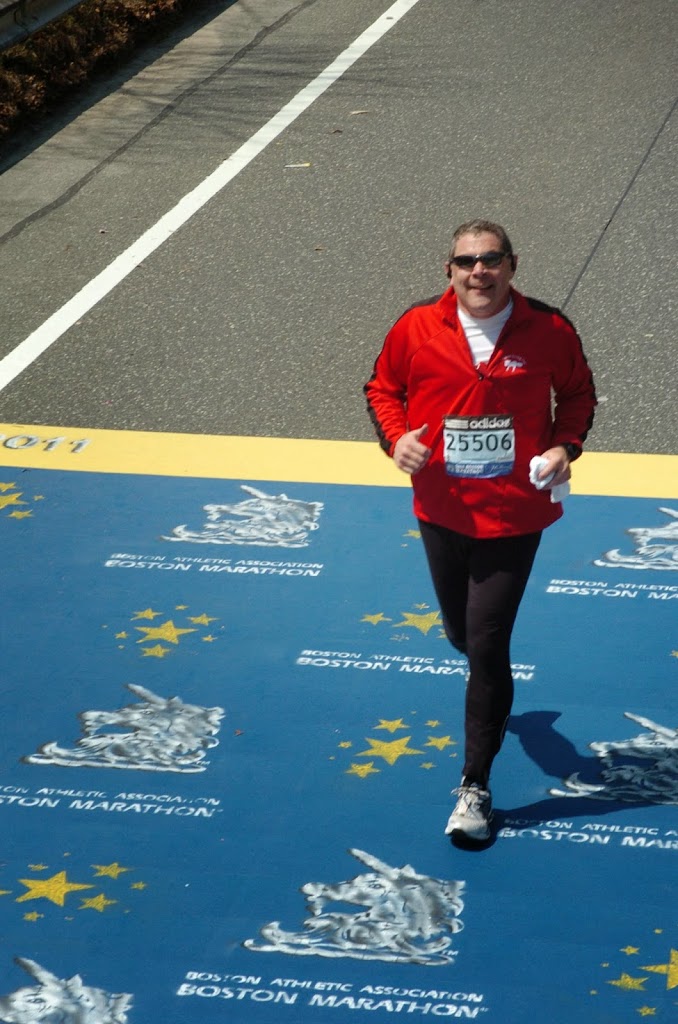 |
| At the half way point |
I remember looking at my watch, seeing I was running an 8:30 pace for the first two miles. I’m an old slow guy and I knew I wouldn’t finish anything if I kept this pace up. So I worked my way over to the side and slowed down. I watched some elite bandits pass by me like they were shot out of cannons then I ran my own race. All I wanted was to finish with an official time, (under six hours) and arrive alive. I wore a 5:30 pacing strip and tried to keep to it. My strategy was to break the race into two parts. If I made it to mile 17, I would see friends from my Wicked Running Club. They were manning the gel stop and one had a bag waiting for me with food, gator and Motrin. If I could continue, then I had two lifelong friends, Ann Smith and Francie Hill, who would wait at the finish line for as long as it took. It’s incredible what you can do when you don’t want to disappoint your good friends.
I did fine for the first half, made it to mile 17. I didn’t stop to chat because I knew I had to keep moving. By the time I made it up and over Heart Break Hill, I noticed they were closing down the water stops. That got me nervous so I pushed as hard as I could. When I had to walk, I power walked, taking long steps and swinging my arms like a mad man. But that worked out well because when I power walked I actually passed people who were in slow running strides.
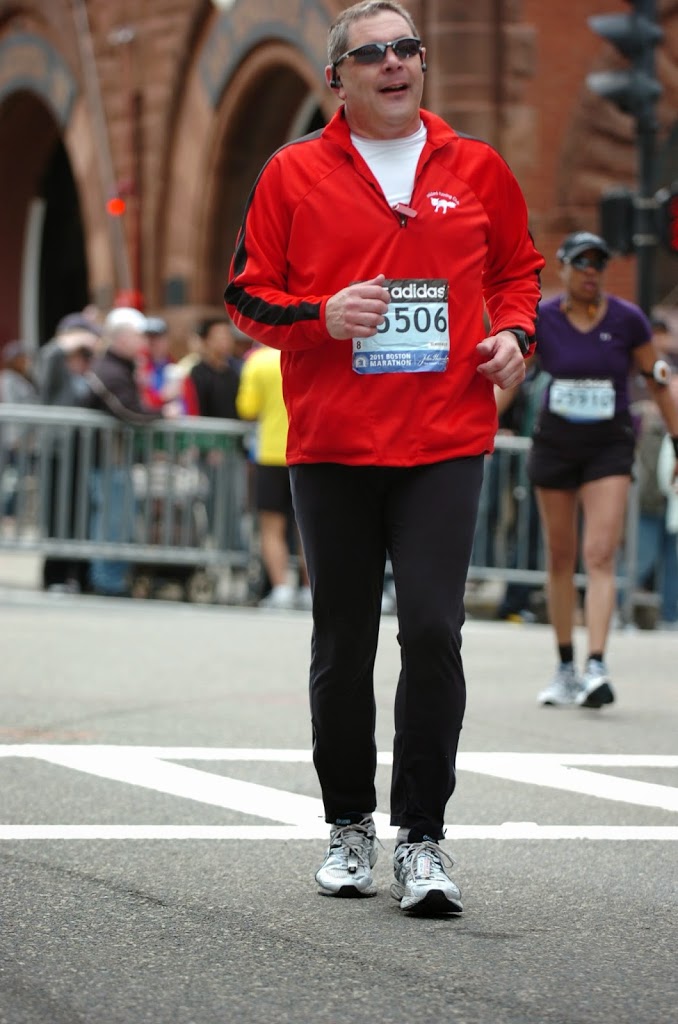 |
| Making the turn off Hereford Street |
After about five hours, I finally saw the Citgo sign. It got bigger and bigger and then disappeared, I could taste the finish line. Finally I got to turn Right on Hereford Street. When I got to the top at Boylston Street, I found there were still crowds cheering runners on. I turned Left on Boylston and saw the finish line. It seemed like a long ways away. I looked at my Garmin and it said I had about eight minutes to make it across the finish line. I knew I had to sprint the last half mile.
I thought to myself, I have to lighten the load, so I took a Gator Primer out of my pocket and tossed it to the curb. I took two energy bars and tossed them. My comfort item was a small white washcloth I had refreshed at each water stop. I wiped my face off one last time and tossed that. I had to look good for the cameras! To “lighten the load” even further, I took an inhaler I hadn’t needed, took one puff and tossed it to the curb. This all made sense to someone who hadn’t eaten his energy bars and who’s IQ had dipped to about 30, but it only took seconds and I did start a sprint to the finish line. I felt pretty good on that last stretch down Boylston Street. I could hear the cheering getting louder as I passed. I think people knew I was working really hard and they appreciated that effort. And I knew I was moving right along because just before Exeter Street someone tapped me on the shoulder. I turned around and a guy said, “Hey, I’ve been trying to catch up to you for a mile, you dropped this. Then he handed me my inhaler. I said “thanks,” then turned away and kept running. I felt bad, but I had someplace to be.
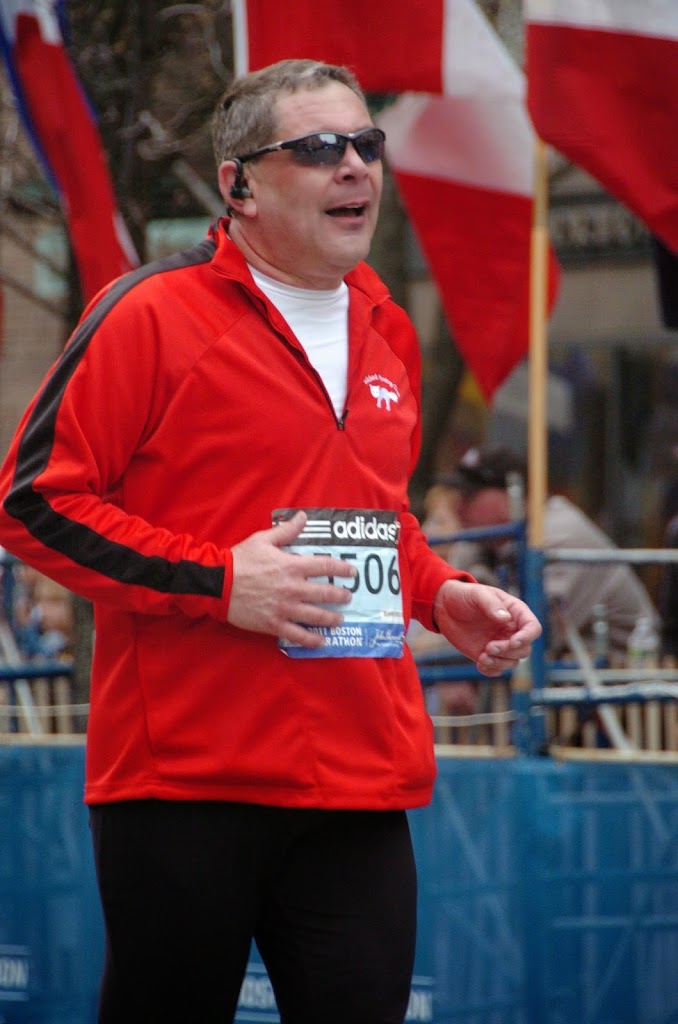 |
| Just before the finish – my inhaler is back in my pocket! |
I crossed the finish line in 5 hours 56 minutes and 15 seconds. I got my official time. My name is on page 131 of the “Racers Record Book,” the last page, 47th from the bottom. When I got to the medals table, Meg Michaels, a friend who I’ve run other races with, put a finisher’s medal on me. It was one of the best moments of my life, and I got to share it with Ann and Francie.
A couple things about this race stand out even today. The volunteers were amazing and if I couldn’t run the race again, I wanted to be part of it as a volunteer. The other thing to note is the crowd on Boylston Street. I didn’t know how far off my watch was but I knew it would be close. What helped me along that last stretch were the cheers of the spectators. I wanted to thank those people somehow. I often wonder if Krystle Campbell was there cheering me on, helping me get an official time in 2011 but I couldn’t help her in 2013. That haunts me. I’ll never know if she was there. Maybe if I lead a good life, one day I’ll get to meet her and thank her anyway.
After such a wonderful experience in 2011, I wanted to give back a little. So for the last three years I’ve volunteered for the BAA as an Emergency Medical Technician, working the medical sweep at the finish line. Our job is to keep finishers walking and to look for any in distress. If we find any in distress we move them out of the flow of runners, provide aid or move them up the medical network. Medical care for this race is second to none, and I’ve run marathons where the only medical care is two kegs of cold Stonecat Ale at the finish line.
The 2012 marathon was a hot race. It was a long hot day and it seemed like everyone was sick. I worked that race with Patsy Emberley RN and we both thought it was more painful to work the race then it was to run it, as we had the year before. By the end of the day we both felt we contributed a lot and helped a lot of runners. I remember we agreed we should do this again, because no race could be as bad as 2012. Then came 2013.
About 9AM on April 15th all the medical volunteers were in the old John Hancock building for a meeting regarding medical protocols for the race. Chris Troyanos, the medical director was at the podium. He told all the rookies to stand up. Then he said, “Look at the volunteers sitting down, they worked one of the hottest races in this marathon’s history last year, we had thousands of sick runners, hundreds were transported to local hospitals, but nobody died. Give them a round of applause.”
It felt good to be thanked for a job well done, but little did we know how the day would end.
The day started out fine, and then descended into chaos in an instant. There was 20 minutes of chaos and desperation while the bomb sites were cleared. Then race control shut down their radio network apparently thinking it might set off another bomb. Patsy and I drifted up and down Boylston Street helping any runners we could. We wrapped them in foil blankets, gave directions and some we even reunited with their families.
We knew a friend of ours, Beth O’Grady had crossed the finish line close to when the 1st blast went off but we didn’t know if she was okay until about an hour later. Cell service was sporadic so I had to use Facebook to find out.
We were dismissed by the BAA but we stayed for four more hours looking for friends and helping whomever we could, all the while hearing sounds like cannon blasts every 15 to 20 minutes. We learned later the bomb squads were blowing up backpacks that had been left behind by innocent spectators. It was nerve wracking to hear those cannon blasts all afternoon especially after what we had just gone through. We left the area about 6:30 and headed over to the Seaport Hotel. We walked most of the way. When we sat at the bar, we were finally able to see a TV and we then realized this was not just a local Boston story but instead, the whole world was watching. Sue Winchester showed up at about 8pm. We knew she was stopped at mile 25 and was okay but it was still good to see her, more Kleenex needed.
Patsy and I drove home and she dropped me off at about 9:30pm. The next morning she was cleaning out her car and called me right away. She told me to throw out my shoes. I knew instantly, I didn’t have to ask, didn’t have to look, I picked them up by the laces and they went right in the trash.
Everyone was affected by this attack to some degree. The BAA members were all victims, and all the volunteers, even those who weren’t near the finish line were greatly affected. Then there were the “bloody shoe” types like myself and the staff of medical Tent A. Some nurses there, such as Adrienne Marie Haglin, had an extra burden. Their family members were outside watching the race. As patients were wheeled in, the nurses first checked to see if this victim was their spouse or child. Then they soldiered on and continued to save lives. They did heroic work in that tent.
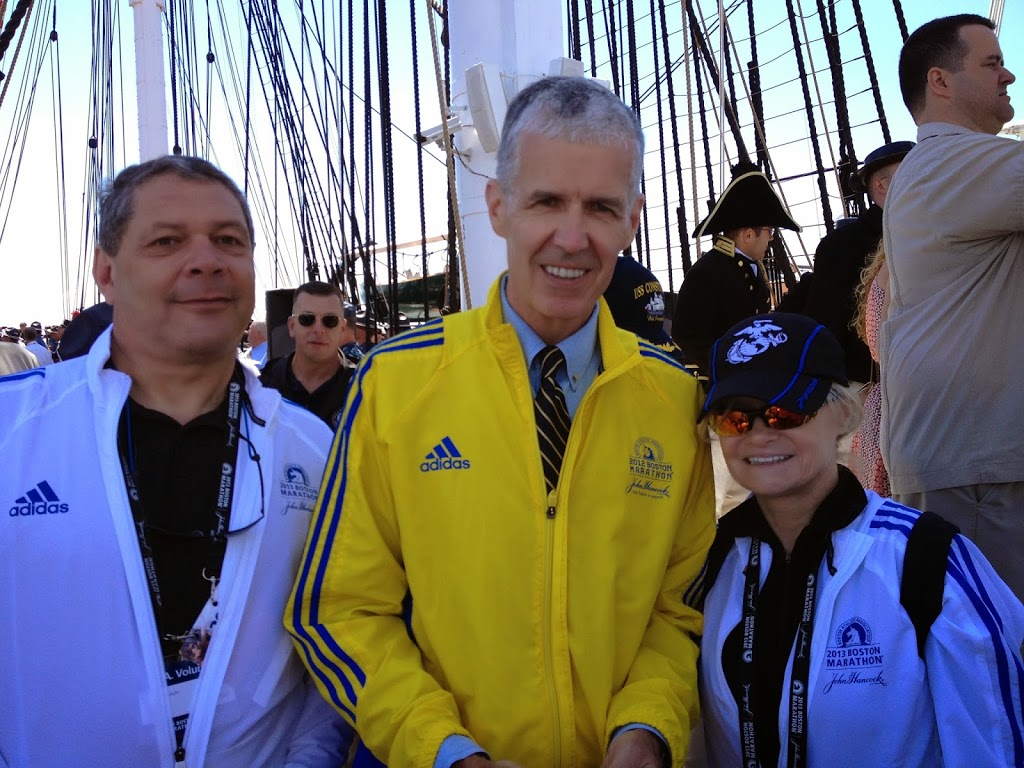 |
| With Tom Grilk |
It’s 2014 and I had second thoughts about coming back this year. I even thought about going fishing on April 21st but I couldn’t stay away. After all, I like helping runners and a lot of friends were running this year. Plus the BAA was very good to us. They knew 1st responders kept the casualty count down to three, and lives were saved by volunteers wearing BAA jackets [as well as Boston Police, Fire and EMS, it was a team effort]. They provided trauma debriefings for “bloody shoe” types like Patsy and me as well as counseling for anyone affected, especially those in Medical Tent A. We were invited out for a turn-around on the USS Constitution with Tom Grilk. That’s right, we met the boss and he is the nicest boss one could have. The BAA even gave bib numbers to some 1st responders who wrote an essay on what they did last year.
So I came back this year. The hype leading up to race day was hard to take. I had to stop watching the news and most TV in general. It helped that we were invited out to several functions prior to the race including the Next 26 fund raisers. There we got to meet victims and other volunteers. We shared stories and learned a lot about what else went on last year; so much of those 20 minutes was a blur when it was happening. We were also invited to the Tribute. That was amazing. So I couldn’t stay home, I knew I had to be there.
It helped that I sat in church on Sunday with Rich and Maureen Tabbut and got scarfed. That was at the Old South Church for the blessing of the runners. This was Easter Sunday, so the Easter service and the Blessing of the Runners ceremony were combined. This was a beautiful ceremony in a beautiful church with a welcoming congregation. There were two runners from out of town sitting beside me. We chatted a little before the ceremony. Then the adolescent in me took the church bulletin and wrote a note on it that said, “Don’t tell anyone but I’m Catholic, I’m just here for the scarf.” I showed it to the runners and got them laughing in church.
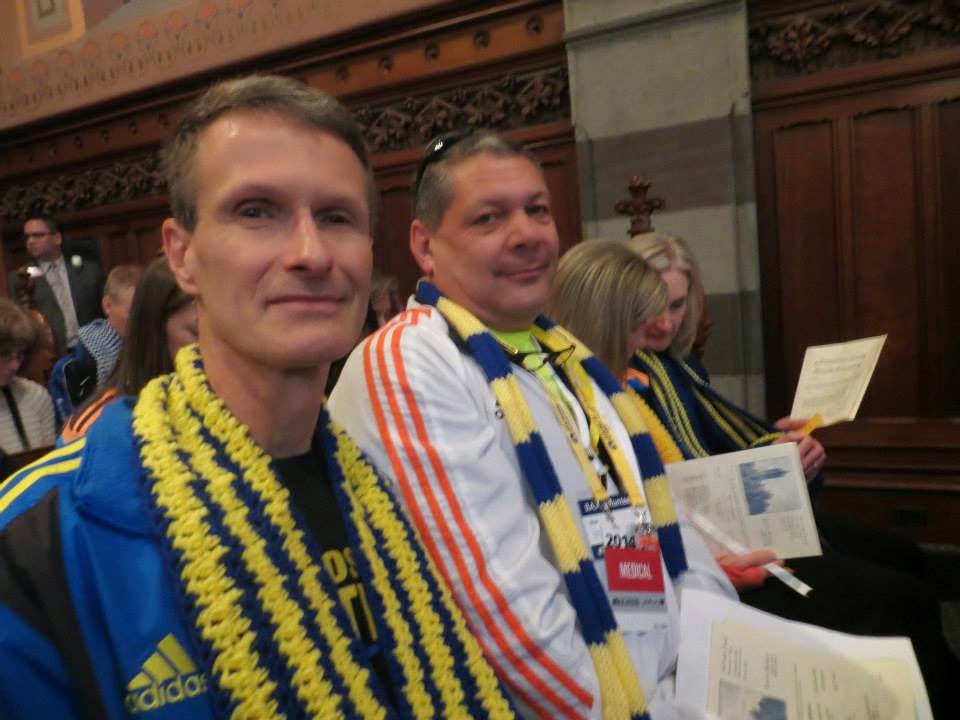 |
| Blessing of the Runners – Old South Church |
Before the race I walked out to Boylston Street and walked into Med Tent A. I walked all the way down and looked over to the right to an empty area of asphalt. I thought, that’s how this section should be. There were a lot of people, doctors, nurses and medics on the other side getting ready for the race. I don’t know if anyone noticed me, I was only there for a few seconds. But I thought to myself, I have to get over this. I have to try to forget. So I started walking back through the tent to Boylston St. The tent volunteers have wide screen TVs to watch the race live. When I looked up at the screen, I saw beautiful Krystle with her blue eye shadow, so much for forgetting.
In the sweep you get to meet runners who have just completed one of the biggest races of their lives. Normally there are a few tears shed at the finish line but this year it seemed everyone was crying, men and women. A couple runners were crying so hard they walked into the barrier set up around the medals table. This year we had a psych team with us in the sweep and we needed them. It was really busy this year. I took about ten runners into the medical tent myself, and there was a line getting in several times. I heard there were more treated this year than in 2012.
I was lucky this year in that I got to see several friends finish. I got to see two nurses who worked Zone 1 with us last year, Kristy Levorson and Amelia Nelson. They were awarded “essay numbers” by the BAA and they earned them the hard way, saving lives last year. These two girls are my heroes. They both ran their first marathon this year and did great.
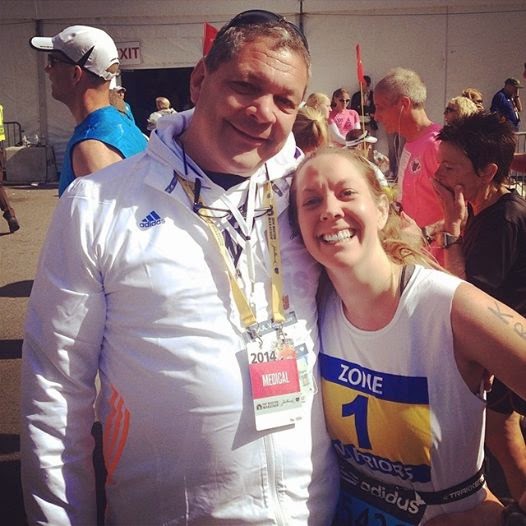 |
| With Kristy Levorson |
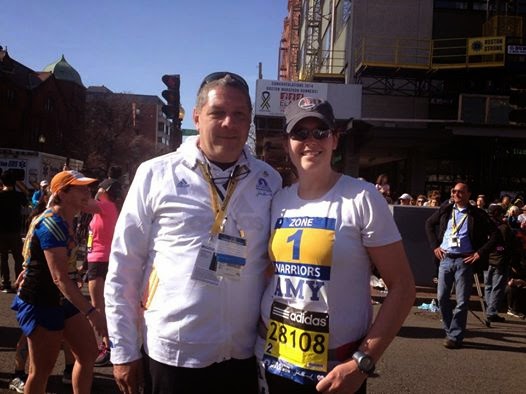 |
| With Amy Nelson |
During a busy part of the race I heard someone yell, “Hey! here’s our friend from church.” I turned to find Holly Hillstrom and Melissa Malinowski from St Paul Minnesota, the two runners I met in church the day before. They were stopped at mile 25 last year and came back to finish this year. What a treat it was to see them again and of course get a selfie.
It was another difficult year in the medical sweep but it was nice to finish a race, pack up and head to the after parties this year. Will I do it again next year? Not sure yet; might just go fishing.
Brian Chisholm
Lynn, Massachusetts
April 18, 2011
Age – 55
Bib # 25506
5:56:15
Email Address: brian.chisholm@yahoo.com
